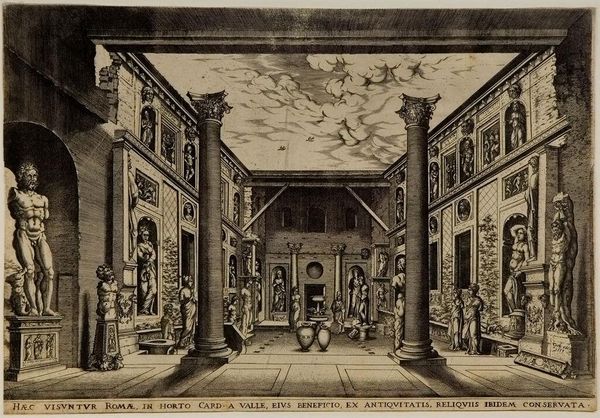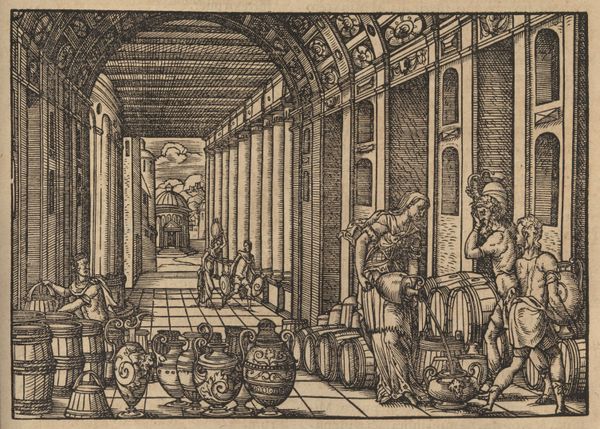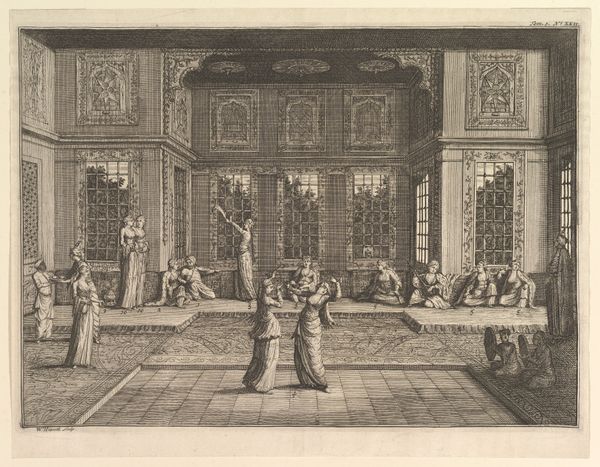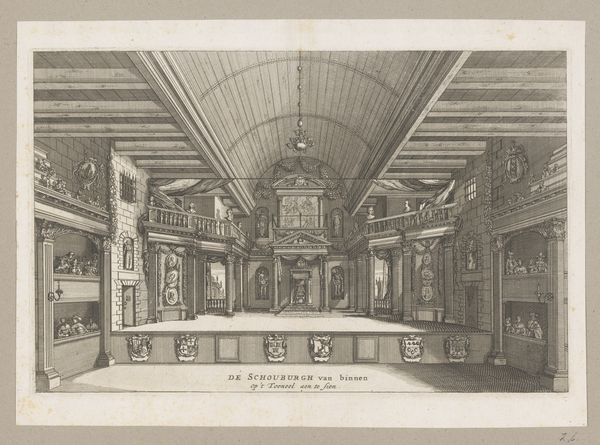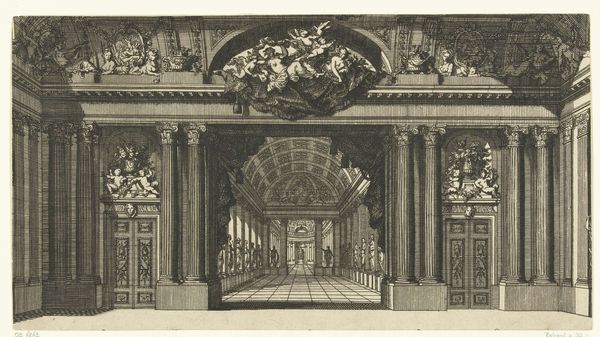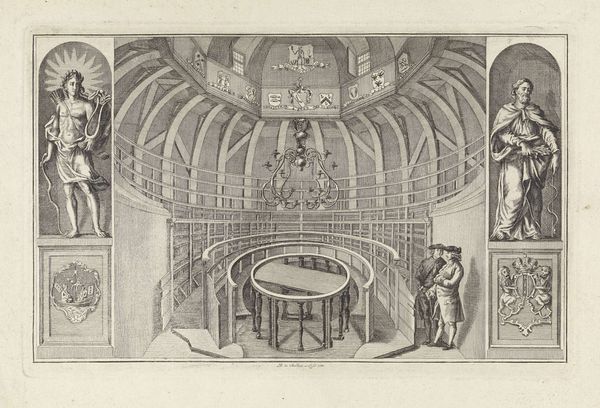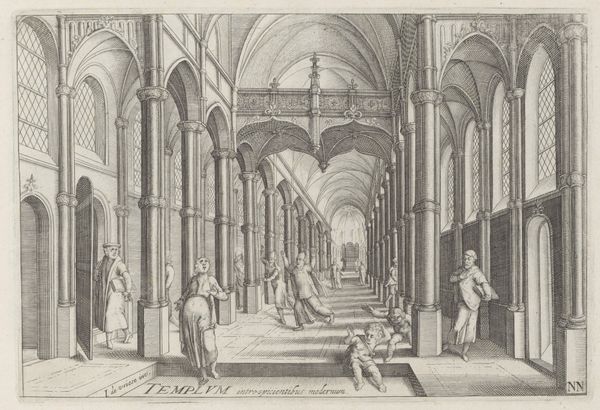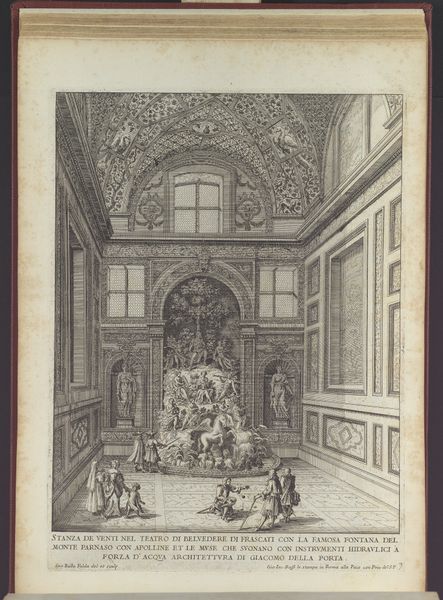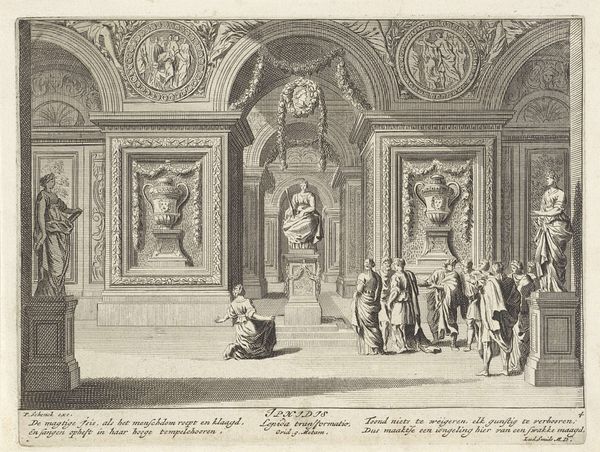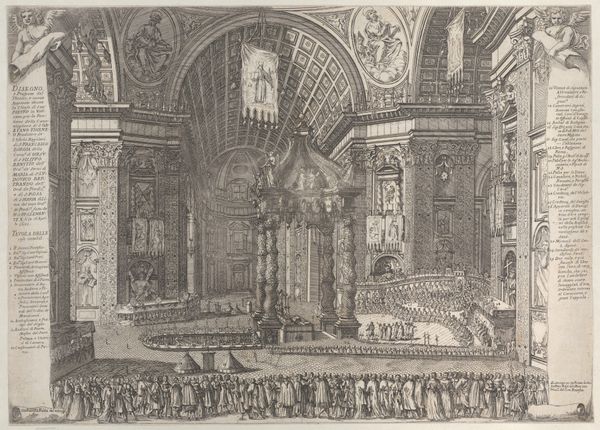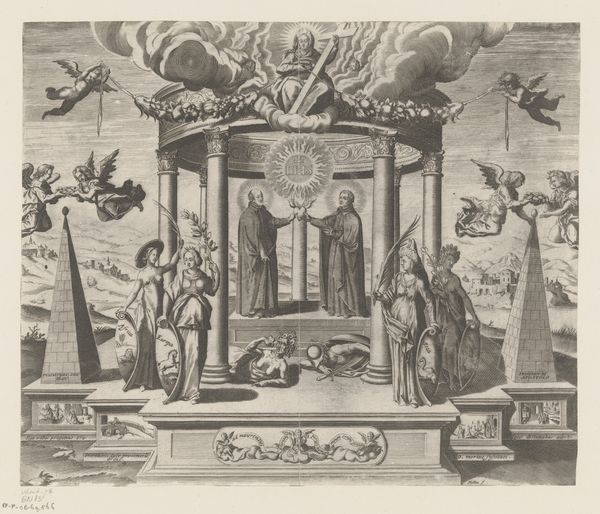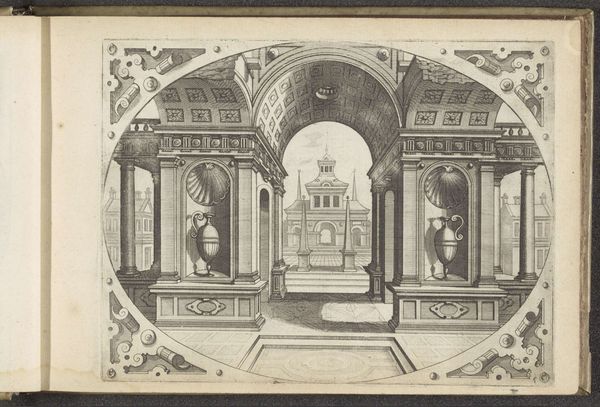
Speculum Romanae Magnificentiae: Della Valle Museum 1530 - 1580
0:00
0:00
drawing, print, sculpture, engraving
#
drawing
# print
#
landscape
#
form
#
geometric
#
column
#
sculpture
#
history-painting
#
italian-renaissance
#
engraving
Dimensions: sheet: 11 1/4 x 16 5/16 in. (28.5 x 41.5 cm)
Copyright: Public Domain
Curator: Let’s turn our attention to this engraving, dating from the period 1530 to 1580, titled Speculum Romanae Magnificentiae: Della Valle Museum. It’s currently housed at the Metropolitan Museum of Art. What strikes you upon first viewing? Editor: It’s an odd harmony, really. The architectural lines—those sturdy columns and sharp geometric inlays—they give a rigid structure, but that's offset by a rather unsettling sky and crumbling facade that seem to indicate the ephemerality of it all. Curator: Absolutely. Heemskerck’s work acts as a commentary on power, wealth, and collecting in the Italian Renaissance. This image documents the Della Valle collection, which was open to the public, embodying a certain display of elite Roman identity through antiquity. Editor: So the arrangement itself becomes part of the meaning. Those sculptures of classical figures—posed, enshrined, even—within that organized space create a deliberate discourse between the collector, the collected, and the visiting public. It reads as a construction of knowledge as much as it does a depiction of place. Curator: Exactly! And how this ‘knowledge’ is actively cultivated and projected requires examination, as these collections frequently lacked proper contextualization for wider society. These objects signify prestige and cultural authority. The image prompts us to interrogate the dynamic between possessing and truly understanding history. It also begs consideration for the historical actors involved in preserving antiquity, their motivations, and the ways collecting practices perpetuated socio-political power imbalances of that time. Editor: Yet on a visual level, there's an undeniable elegance in the layering—the progression from the foreground figures to the implied vastness beyond those columns creates a space both intimate and expansive, despite it being bound on all sides. Curator: I agree. Considering the history imbued into its form makes one reflect upon the act of looking, cataloging, and essentially narrating history from particular perspectives. Editor: An intersection, then, of artistic expression and the societal norms. I leave feeling encouraged to consider these collections today with an equally critical lens.
Comments
No comments
Be the first to comment and join the conversation on the ultimate creative platform.
